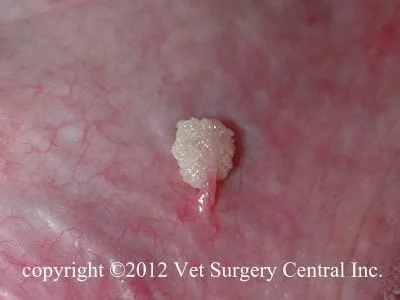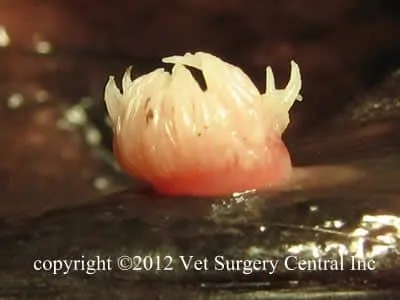Key Points
Oral papillomas are warts in the mouth cavity; these warts can affect other parts of the body
These generally are not a major problem to the pet
Treatment is usually not needed as these warts will usually resolve spontaneously
What are papillomas?
These are in essence warts. They are caused by a viral infection due to the papilloma virus. This disease can be transmitted from dog to dog, however, most dogs will fight the infection, thus no warts develop. Dogs with a compromised immune system are those that develop the clinical disease. After transmission of the virus from one dog to another, it takes about 1 to 2 months until the masses develop.

Clinical signs
Most dogs are puppies and any breed can develop the problem. Warning signs of oral papillomas include a foul odor from the mouth, blood discharge from the mouth, and small masses located on the lips, roof of mouth, tongue and throat. Other less commonly affected sites include the eyelids, eyes, and between the toes. These masses may look like a sea anemone (see below) or cauliflower (see above). In severe cases, breathing and swallowing may be compromised due to the masses.
Treatment
No treatment is generally needed for oral papillomas. In extreme cases, papillomas can be removed which may stimulate the immune system and cause spontaneous regression of the entire infection and masses within the oral cavity. A vaccine can be developed from the existing warts and injected into the pet. A topical medication called imiquimod can be used to enhance the immune system to fight the virus. A medication called azithromycin has also shown resolution of the warts within about 2 weeks with no recurrences (8 months of follow-up in this study); this is likely going to be the treatment of choice in dogs.

Prognosis
Spontaneous resolution of the warts may take up to 5 months. The most successful treatment has been with azithromycin.


